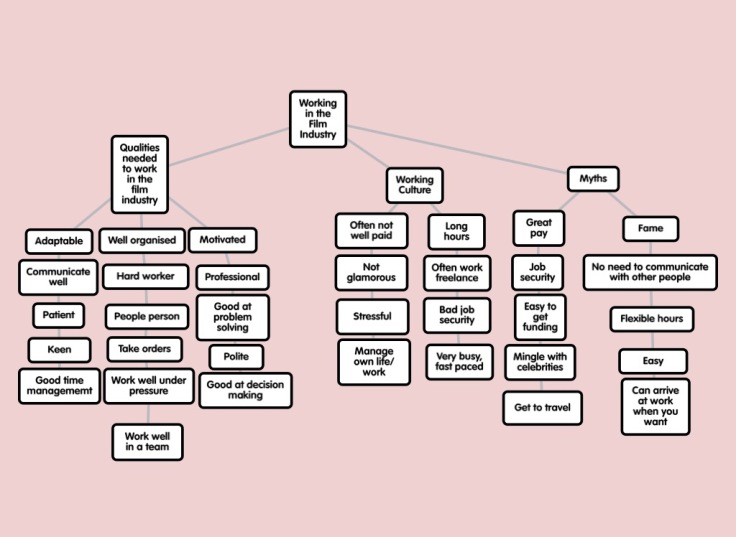1.1 : Working Culture of the Film Industry

1.2 : Time Management Skills
Time management is seconded only by budget management in terms of importance in any film related project, sometimes not even then. It is crucial to have an excellent understanding of time management before beginning production, as not doing so could have drastic consequences for everyone involved in the project.
Time management is anything that is used to plan out events in advance so that they can be brought to completion in a timely manner. This can be as straight forward as planning out the time allotted to complete each phase of production to planning out each individual activity within a day of shooting, including actors and crew members needed, the locations they are planning to shoot on that day and even the equipment and props that are required for that day.
The two main methods of time management are time schedules and call sheets.
Time schedules is writing down how long each phase of production will take to complete, going from as broad as “Time taken to complete Pre-Production” and”Time taken to complete Principal Photography” to finely combed details like “Time to complete credit sequence” and “Time to complete CGI dragon”. This is gospel to every member of the production crew, as it can be the difference between getting a promotion or getting fired in many cases.
Call sheets are much more specific, detailing the work needed to be done in each hour of every day, each crew member needed on set that day and what shots and scenes need to be filmed. If time schedules are gospel, then these would be the individual books of the bible that each crew member has to study and follow each individual guideline as precisely as possible.
1.3 : Health and Safety
Health and safety is one of the most risky parts about beginning production on a project, purely just because of all the things that could happen on a set and the consequences that they bring. Tripping over wires, having a light fall down and set the studio on fire or even a wild animal attacking on a location shoot.
In order to prepare for these possibilities, it is vital that you do an initial risk assessment of wherever your crew will be working; That means both outside locations and the studio you may be using to film at, because there are hazards in every location, no matter how familiar you think you are with that location.
During your risk assessment, you should account for:
- Fire hazards and escape routes
- Tripping hazards
- Objects that could fall onto crew members
- Objects that could burn or cut crew members
- Allergens in the working environment
Location Safety Reports
1.4 & 1.5 : Copyright
Aside from actual physical damage that can be caused through accidents, copyright infringement is the absolute most dangerous part of any project, mainly due to how easily some things that could be normally overlooked can lead to multi-million pound lawsuits being filed against your company – which will more than likely end up affecting not just you, but everyone you ever worked with on the project as a whole, possibly leading to layoffs.
Anything can lead to copyright infringement, ranging from using different videos or music without permission or even using certain architectural structures or making references to another intellectual property. To avoid these mishaps, it is advisable that anything you believe could be a problem, no matter how minor you suspicion is, should be thoroughly researched to make sure whether it is ok to put it in your project or not.
Well done Glen you have done a great job with this section, after your shoot I would like if you could add to this section outline any issues that may have arose whilst shooting your short.
LikeLike
No problem Jen. Thanks for keeping me informed.
LikeLike
Great work Glen on completing this section of your NCFE, I realise you were very sick whilst we were filming so are unable to write up about your experience on set.
LikeLike
Still incredibly bummed out I never got to help out my team on set, but I’m glad they don’t seem to hold me in contempt for it.
LikeLike